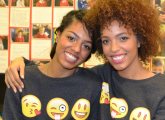David Ashworth takes us through a sound approach to improvisation in the classroom…
Improvisation has played a powerful role in many of the innovative developments that have been made throughout musical history, and it is a central part of how countless practising musicians today work around the world. However, in the music classroom it often comes as an afterthought, if it is used at all. However, putting sounds together is at the heart of composition, and one of the best ways of learning how to do this is simply to jump in at the deep end and experiment. Improvisation can help to provide students with a framework in which to try out ideas freely, and the best ones can then be fed into composition assignments. You may find that the quality of music making will often be of a higher standard as a result, because it is grounded in self-expression and emotion rather than the detached manipulation of samples or crotchets and quavers.
Improvisation is an area of music making that doesn’t rely on the ability to read notation or play any one instrument particularly well; the focus instead is on creativity and expression, and this can help to level the playing field among your students. The emphasis should be on invention rather than accuracy – ‘mistakes’ can be accepted and even celebrated as leading to new musical pathways.
Today you will…
- Make significant progress developing instrumental and/or vocal fluency and gain valuable insights into what it means to play expressively
- Develop ensemble playing skills, responding to visual cues and using notations appropriately
- Learn to develop and transform musical material within the context of live performance and as a precursor to composition activity
Call and response
One student plays (or sings) a short phrase on a single (named) note. The rest of the group tries to copy the phrase exactly (all together on cue).
The leader gradually adds in more notes to the phrase (perhaps using the notes of a scale the group is currently studying).
The leader plays a phrase and the rest of the group develops it, one learner at a time.
1. Gradual change
For this activity, your students will need to start with a short phrase as a stimulus. This could be created or improvised by your students, or you could provide them with a motif. This might be:
• A series of pitches:
• A specific rhythm:
• Or a motif that could be as
vague as move up, then down,
then up:
Using this stimulus as a point of departure, ask your students to gradually transform and modify it. Each repetition should be related somehow to the previous version, but your students should continue to transform the motif into something new and interesting. Your students could explore:
• changing the rhythm or tempo
• varying some of the pitches
• experimenting with the articulation
• changing the mood
• changing the dynamics
• transposing the phrase up or down by a given interval
• modifying the phrase through inversion or retrograde.
You could allow students to modify the phrase however they wish, or you could restrict them to only changing one particular element at a time. For example, you could use cue cards to specify when you want them to transform the phrase just by changing the rhythm, or the articulation, and so on.
This activity is a good one for teacher or peer assessment, especially if it is solo improvisation that is being assessed. How well does the music develop? Does it follow a coherent, ‘logical’ path or does it seem to jump haphazardly from one phrase to the next? Is the playing expressive? Students may wish to record their more successful improvisations – and use these as starting points for composition work.
2. It’s the way that you play it
This activity requires students to respond to a series of cue cards, which could indicate a variety of different:
• articulations
• dynamics
• rhythms
• moods
• tempos
• scales
• keys
These cue cards could be prepared in PowerPoint and then presented as a slideshow. Aside from the prompts on the cue cards, this could act as a free-improvisation activity or you could provide a stimulus to begin with (such as a specific key, melodic phrase or rhythm).
Although this activity involves the use of improvisation, there is an emphasis here on using the cue cards to check students’ understanding of particular technical terms, or perhaps used to practise reading notation (for example by using cue cards with a series of short rhythms that gradually get harder). They might also be used to reinforce/exemplify musical phrases from any given genre or style that you happen to be working on. Assessment is therefore likely to focus on accuracy of carrying out the notated instructions rather than the quality of the improvisation.
Ask your students to create a varied collection of sounds for their instrument or voice, which have different:
• durations
• timbres
• dynamics
• registers.
Students should find a way to notate these using symbols, graphics, words or standard notation, and write out their results on a series of cards. They should then improvise a performance using these sounds, which could either be chosen at random or arranged on a graphic score.










David Ashworth takes us through a sound approach to improvisation in the classroom…